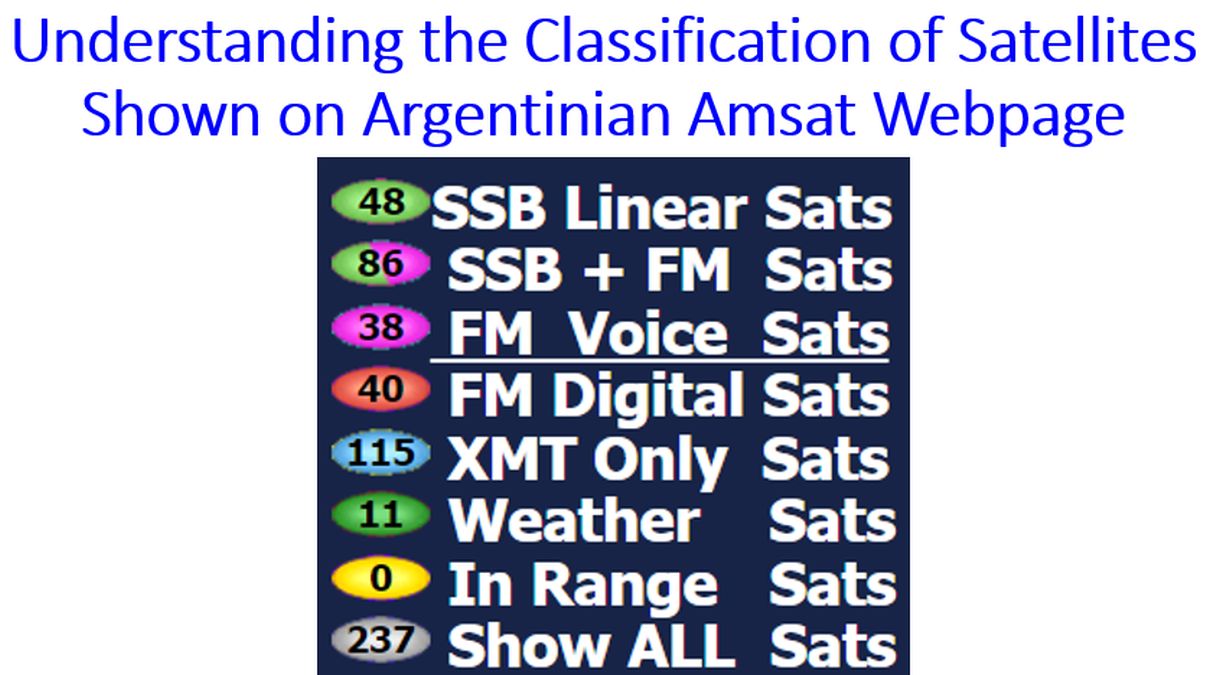Understanding the Classification of Satellites Shown on Argentinian Amsat Webpage
Understanding the Classification of Satellites Shown on Argentinian Amsat Webpage
We routinely use the Argentinian Amsat Webpage for finding out the amateur radio satellite passes, direction of passes and live Doppler tracking during the pass for manual tuning of radio. Today one of my VU freinds asked me to prepare a note explaining the classification of satellites displayed there. Here is a screenshot of the classification shown there.

SSB Linear Sats mean satellites with a linear transponder. Linear transponder receives the signals on the uplink and transmits them on the downlink. Usually both single side band or SSB and CW or continuous wave Morse Code signals will be received and relayed by them. They will have a bandwidth of 20-60 kHz, depending on the satellite. Some have inverting transponders which receive LSB or lower sideband and relays as USB or upper side band, while others have non-inverting transponders. We are not supposed to use FM on linear transponders as the large bandwidth of FM is likely to cause higher battery drain for the satellite. Multiple sets of operators can communicate simultaneously on the linear transponders using SSB or CW which have much lower bandwidth compared to FM.
SSB+FM Sats listed next means it is a list of both SSB and FM satellites and you can see the number is higher. Next comes the FM Voice Sats, the ones often used by new operators on amateur radio satellites. They receive the signals from amateur radio stations on FM mode in the uplink frequency, extract the audio and re-transmit it on the downlink frequency for other amateur radio operators on ground to receive. Both these types are usually cross band transponders, receiving either in VHF/UHF and re-transmitting on UHF/VHF.
FM Digital Sats are those which have a digipeater. For example, there is an FM digipeater on International Space Station which used to operate on 145.825 MHz. Both uplink and downlink was on the same frequency. Currently the FM digipeater on ARISS is shown as ‘Temporarily stowed’ on their status webpage.
XMT Only Sats would mean those satellites with telemetry only and no transponder for amateur radio operations. Weather Sats is a self explanatory name. In Range means those which are currently crossing your sky, provided you have entered your location information at the bottom of the page. Show ALL is also self explanatory. Please note that just because a satellite is shown on the webpage, the satellite need not be transmitting.
Many of the old satellites may be inactive while some may be active intermittently, being switched on/off by their controllers. We have to check other sites like the AMSAT Live OSCAR Satellite Status Page to see the recent activity status of the satellite as reported by other amateur radio operators. Links to all pages mentioned here are available on my blog, the link to which is there in the description box below the video. I have compiled a list of active FM satellites and important information on them here.